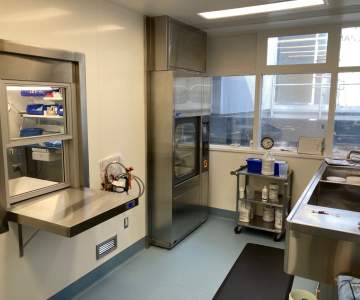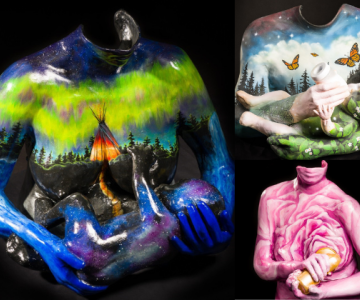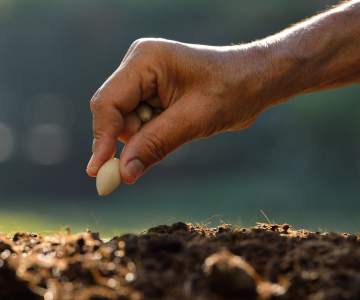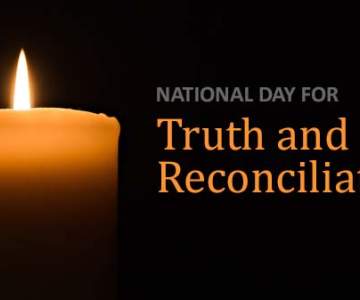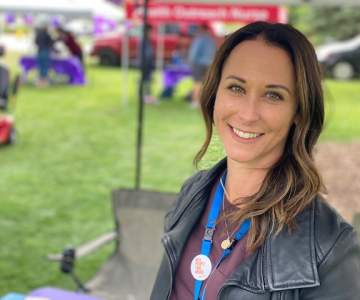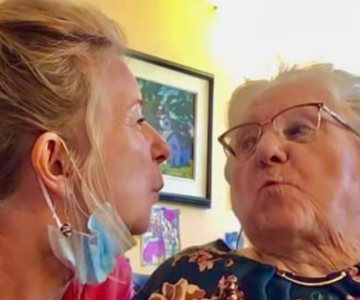Breadcrumb
Explore Stories
2 Minute Read
Health & Wellness
Gratitude is saying "thank you." But it's more than a thank-you to a friend for a favour or gift. Gratitude is saying thanks for everything that is important to you and good in your life.
Gratitude is linked to well-being. Studies suggest that people who practice gratitude appear to be more optimistic, pleased with their lives, and connected to others when compared to those who reflect on daily hassles or on everyday events.1 Another study suggests that gratitude in teens is linked to feeling good about life, being optimistic, and having a good social network.2
You also might find that gratitude may help decrease anger. If you find yourself thinking about how someone has wronged you, shift your attention to someone else who has been there to support you.
Gratitude may also be linked to resilience, which is having an "inner strength" that helps you bounce back after stressful situations. The traits mentioned above, such as optimism and connection with others, are often found in people who are resilient.
7 Tips for practicing gratitude
Spend a few minutes at the end of each day and think about, or even write down, what you are grateful for that day. Think about people, events, or experiences that have had a positive impact on you.Call or email someone just to say "thanks."Write thank-you notes as well as saying "thank you" when you receive gifts or favours. Or write a letter of gratitude and appreciation to someone. You don't have to mail it.Write a letter to the editor of your local newspaper about something a stranger did for you. Or just say "thank you" to people you don't know, such as waving when a person lets your car cut in during heavy traffic.When feeling burdened by your health, give thanks for the abilities you still have.Start a family ritual of gratitude, such as giving thanks before a meal.Find a creative way to give thanks. For example, plant a garden of gratitude or take pictures of things you are grateful for.
This article is based on Practicing Gratitude by HealthLink BC
3 Minute Read
Health & Wellness
As Medical Device Reprocessing (MDR) units go, it’s one of the smallest around.
But that’s OK, because the brand new two-person unit fits perfectly in the Lillooet Hospital and Health Centre. And fits right in with a team of health-care professionals that work together to give residents from a large rural area excellent care and a wide array of services.
The second week of October is dedicated to celebrating MDR departments; reach out to an MDR team member this week!
The MDR is a critical cog in the care environment that includes a surgical unit that runs three-and-a-half days a week and an emergency department that is open 24-7. The MDR is where surgical and medical tools are cleaned, sterilized and prepped for use – keeping residents safe during procedures.
In Lillooet, the MDR is newly designed, a state-of-the-art piece of equipment in a newly renovated space, thanks to a $736,000 investment in the Lillooet Hospital and Health Centre (LHH). The Interior Health project brings the MDR up to current standards of care improving work-flows and patient safety. Height-adjustable ergonomic sinks and workstations allow for enhanced safety for employees and a new steam sterilizer features the latest technology.
And now, it’s full steam ahead for the Lillooet Health Centre, which may be one of the smallest rural hospitals in B.C. still doing surgeries. Many smaller hospitals don’t have their own MDR - a critical piece in the surgical process – and send tools to other Interior Health MDRs for cleaning and preparation. The Lillooet MDR not only has its own MDR, it has also done reprocessing for other rural facilities.
“I’ve heard on many, many occasions that this might be the smallest MDR in the world,” says Megan Delf, LHH’s nurse administrator, a Registered Nurse for 25 years who joined the team in Lillooet in 2010. “But it’s super functional, the flow is great and it’s now filled with state-of-the-art equipment.”
Teamwork is a foundation of Interior Health and at the Lillooet hospital that’s personified. One trained MDR technician is supported by operating room staff/nurses, who are also trained on the MDR. And it’s a busy place. A surgical program that includes one GP surgeon and GP anesthetist perform over 150 scopes per year as well as other procedures such as hernia or carpal tunnel surgeries.
“There is a real sense of connection to our patients. It’s a really great community,” says Megan.
Situated two hours from Kamloops, patients come from a large geographic area and the hospital serves as a hub for those rural and remote areas, including seven Aboriginal communities. Rural patients come to LHH from far and wide, and luckily don’t have to travel further for some procedures.
“We provide a valuable service for the community,” says Megan. “It’s really challenging for some of the population to get to Kamloops for services. The team is really excited for the new MDR. We’ve been working at this for several years. It’s a very valuable investment in the community and the services that are available here.”
One more thing on teamwork: During the project, LHH was sending its surgical tools to Royal Inland Hospital in Kamloops. Megan says it allowed their operating room to remain open.
“The team in Kamloops were integral for us during the project. We wouldn’t have been able to stay open for surgeries without them so we wanted to send them a thank-you.”
3 Minute Read
Health & Wellness
Breastfeeding provides many health benefits for mothers and babies.
Communities and health-care organizations have an important role to play in creating an environment that makes it easier to breastfeed.
Recently, the Penticton community has been taking steps to support breastfeeding in the South Okanagan.
Baby-Friendly Initiative a vital partnership
Health-care teams at Penticton Regional Hospital along with those at the Penticton Health Centre and the Penticton Indian Band are working together to develop a baby-friendly culture. Their goal is to make significant improvements in the health of mothers and babies in the South Okanagan.
Together they are working towards achieving the Baby-Friendly Initiative designation. This will be the first such Canadian partnership between a hospital, community and a First Nation health department.
The Baby-Friendly Initiative, launched by the World Health Organization and UNICEF in 1991, is a global effort to implement practices that protect, promote, and support breastfeeding. It has been shown to improve short and long term health for infants, such as lower rates of infections, sudden infant death syndrome, and obesity later in life. It is also associated with reduced chronic disease in mothers, including obesity, diabetes and breast cancer; it enhances quality of care and empowers them to make informed infant feeding choices. It also recognizes there are medical and personal reasons why a baby may not be breastfed and supports all families by ensuring they receive the best care possible.
The breastfeeding family ̶ unique trio of plaster casts on display
Coming this fall, a unique trio of plaster cast busts will be on display in the Penticton hospital lobby. Each of the three casts is based on artists’ interpretations of stories shared with them about personal breastfeeding journeys. They were created for the Breastfeeding Art Expo that toured Interior Health in 2017-2018.
“The art exhibit is part of our vision for excellence in maternal and infant health care,” says Sara Evans a director of clinical operations at Interior Health.
Lactation room opens at Penticton Regional Hospital
On Oct. 4 the hospital will officially open its first dedicated lactation room.
Located in the corridor between the emergency department and diagnostic imaging, the newly refurbished room will provide a quiet, comfortable area to staff, physicians, patients and visitors for feeding or pumping.
“People are welcome to feed or pump milk anywhere they choose in the hospital, but this room provides relaxation and peace and quiet, which we expect both parents and babies will really appreciate,” says manager Cindy Barton.
Feature image of plaster casts Left: The Source by Rebecca Bessette; Top Right: Mama’s Milk by Nathan Stewart; Bottom Right: Sweet Nectar by Nicole Hobbs. Lead Artist: Angela Safire Jones.
2 Minute Read
Community & Culture
We are IH is a recognition campaign to spotlight Interior Health employees and medical staff – through pictures and stories.
Name: Shannon Kambick (she/her)
Job Title: Community Health Worker
Years of Service: Nearly one year
Worksite: Kiro Wellness Centre
Community: Trail
Ancestral Territory: Ktunaxa (Tun-ah-hah)/Kootenay
Favourite Quote: "In a world where you can choose to be anything, choose to be kind." -Unknown
Shannon and her husband
As a Community Health Worker in Trail, Shannon Kambick is encouraged by her clients every day.
“I’m inspired knowing that I can give my clients the care, dignity, independence, privacy, preference and safety they deserve. I know that I make a difference in their lives.”
Shannon describes herself as a caring individual who thinks all things living (human or not) deserve respect, caring and compassion. These attributes are essential in her role.
One of Shannon’s proudest moments in her job was when she noticed a client in distress, possibly prone to self-harm. She followed the proper procedures and called the RCMP, which ended up with the client receiving the help they needed at the hospital.
Shannon and her mom while snowshoeing
One of Shannon’s passions is travelling and learning about other cultures; she’s looking forward to travelling to new countries once she’s able.
“I was lucky to go on a Rotary youth exchange program when I was younger. I lived in Honduras for a year to learn the language and culture.”
Shannon keeps active in her down time, walking her parents’ dog or volunteering at the SPCA. Her favourite team sport to play is water polo and she used to run triathlons. Shannon also enjoys reading and completing paint by numbers art.
Shannon's paint-by-numbers artwork
Shannon's nomination keeps the We Are IH loop going:
“Amanda Mackenzie is a new employee as well. She's passionate about being a Community Health Worker and is amazing with her clients." - Shannon Kambick
Stay updated with careers at Interior Health
Facebook | Instagram | LinkedIn
2 Minute Read
Research & Innovation
Historically, Aboriginal peoples have been the subject of research rather than partners in it. This has led to mistrust and outcomes that do not always benefit the communities that are studied. Vanessa Mitchell, Aboriginal Lead and Cultural Safety Program Manager; and Leslie Bryant, Regional Practice Lead for Research are among those changing the way Aboriginal health research is conducted.
The pair--along with former Knowledge Facilitator Christopher Macklin--partnered with Elders Eric Mitchell (Syilx Nation), Chris Marchand (Syilx Nation) and Roberta Price (Snuneymuxw / Cowichan Nations) to create and lead a workshop for researchers interested in working with Aboriginal peoples. The workshop, titled Planting the Seeds, also led to an academic paper on the subject, published in the International Journal of Indigenous Health.
The team hopes that,
“…the seeds we planted will take root and grow among all of our workshop participants as they navigate their own personal journeys of learning, self-reflection, and allyship within research.”
Elders shared how oral histories have weight and carry validation, the importance of building bridges and making connections, and how stories have been and continue to be healing. Three themes emerged from the participant feedback: (1) bringing together the mind and the heart; (2) self-reflection and initiating change; and (3) understanding cultural safety as a lifelong journey.
Vanessa, Leslie, Elder Eric and Elder Chris recently met with podcast host Tracy Mooney to talk about their work. Tune in to Interior Voices to hear their stories.
1 Minute Read
Community & Culture
Truth and Reconciliation is an ongoing journey
Trigger Warning – The information and material presented here may be triggering to some individuals, and may cause unpleasant feelings or thoughts. Many individuals find it helpful to discuss these feelings in a supportive and trusting environment. Please reach out to the supports most appropriate to your individual needs.
In honour of truth and reconciliation with Aboriginal communities, we invite you to share your support by writing a short message, sharing your learnings, or uploading a photo.
September 30, 2021 marked the first National Day for Truth and Reconciliation in Canada. However, Truth and Reconciliation is an ongoing journey—both individually and collectively. Interior Health is committed to addressing past and present harms resulting from the residential school legacy and negative effects to the health and wellbeing of Aboriginal Peoples.
Upload your photo in your orange shirt and share your message to the Reconciliation Wall to show your support for truth and reconciliation.
2 Minute Read
Community & Culture
We are IH is a recognition campaign to spotlight Interior Health employees and medical staff – through pictures and stories.
Name: Dominique Frost (she/her)
Job Title: Human Resources Recruitment Assistant
Years of Service: 10 months
Worksite: Community Health & Services Centre
Community: Kelowna
Ancestral Territory: "Syilx" Okanagan (O-k an-a-gan) Interior Salish
Favourite Quote: "Life is a journey of discovery."
Dominique Frost is proud to be an Interior Health employee and part of a team who cares deeply about the work they do. In her role as Recruitment Assistant for our Human Resources department, she supports all new employees joining our organization.
"Helping others along their career path, listening to their career successes, and learning about their career goals is the driving force of my job, day in and day out."
Dominique describes herself as dynamic, adventurous, kind, curious, and thoughtful - qualities that enable her to work well with people - perfect for her role in HR. She says working collaboratively with her hard-working colleagues inspires her to learn and grow.
"Everyone on my team cares deeply about the work that they do. I am proud to be part of my team and an organization that is paving the way for younger generations."
As Dominique develops my own career, she is committed to challenging herself to think outside the box, learn from others, and grow herself as an individual.
"I also look forward to continuing to engage with employees and understand better the daily intricacies of their jobs."
Interests and passions Dominique enjoys outside of work include road biking, mountain biking, softball, hiking, camping, and enjoying the Okanagan sunshine.
Hiking in the Rocky Mountains
Banff, AB
Cinque Terre, Italy
Dominique's nomination keeps the We Are IH loop going:
“I nominate fellow recruiter Louise Pilon. Louise is friendly, energetic, and passionate about her work. We also share the same love in road biking. We have been working closely together since I started with the Recruitment team in November and she has always been so warm and welcoming."- Dominique Frost
Stay updated with careers at Interior Health
Facebook: Interior Health | Instagram: interiorhealthbc
| LinkedIn: Interior Health Authority
3 Minute Read
Health & Wellness
Last year there were 283 overdose deaths recorded in the Interior Health region. The highest yearly total yet.
To prevent more of these tragic and preventable deaths, the province has developed a new way for health-care staff to safely support people who require overdose prevention services. These services include having health-care staff observe drug consumption in a private and hygienic setting; monitoring and responding if there is an overdose; providing harm reduction such as Take Home Naloxone kits; and making connections to other health-care services.
These overdose prevention services are now being provided on an as-needed basis at several sites including Lillooet Hospital; 100 Mile District Hospital; the Penticton Downtown Mental Health and Substance Use office (formerly the Martin Street Outreach Clinic); Rocky Mountain Lodge (location of Cranbrook Mental Health and Substance Use); and the Sparwood Health Centre.
“While we are not establishing permanent overdose prevention services in these facilities, this is an important step to help staff respond to urgent overdose prevention needs in locations that have seen increases in overdoses and overdose deaths. These are smaller communities with otherwise limited resources,” says Interior Health Mental Health and Substance Use Practice Lead Andrew Kerr. “We know these are life-saving services. Research shows the combined response of providing access to Take Home Naloxone, Opioid Agonist Treatment (medication such as methadone and Suboxone) and overdose prevention services have been effective in averting many overdose deaths in B.C.”
In Penticton, these services have been available since this spring at the downtown Mental Health and Substance Use location.
“I love this part of my job,” says Penticton Overdose Prevention Nurse Amanda Perrey. “I appreciate the ability to provide my clients with a service that’s so necessary, in a space that is free from judgement. I love building relationships with clients, and getting to a point where I can talk to them about available treatments and services in a manner and at a pace that works for them.”
In a field that relies heavily on relationships and word of mouth, the new overdose prevention service is building momentum. Since these services became available in Penticton, Amanda has had three visits from people hoping to use their drugs more safely.
“One was a gentleman new to Penticton, who came looking for harm reduction supplies. I explained our services and he came in and utilized the whole gamut – he had me test his drugs, he used his substance safely, we did some vein care and I gave him some safer injection education, he took a Naloxone kit, and I helped him download the LifeGuard app onto this cell phone. He opened up and talked a lot about his substance use, his relationships, his relapse, and the impact on his work. I was really happy when he came back two days later.”
“This program is evidence-based and I’ve personally witnessed people who have a mistrust or even fear of the health-care system access our services and they benefit from it – they’re able to start developing trust in the system, and make the changes that they want to make.”
To learn more, check out this short video or visit overdose emergency for information about overdose prevention services in Interior Health. To find out how to access these services in Lillooet, 100 Mile House, Penticton, Cranbrook and Sparwood, call 310-MHSU.
3 Minute Read
Community & Culture
I’ve always looked forward to spring and summer. Spending time in my garden, extra time with my grandchildren, and travelling to scenic spots in our trailer are some of the typical highlights.
But I’ll remember the summer of 2021 for very different reasons. A pandemic, the tremendous heat waves and an awful wildfire season to name a few.
I few weeks ago I went into Kelowna General Hospital for eye surgery. Despite all the COVID protocols and changes in health care this year, I was overwhelmed by the positive experience I received.
Surgery is nerve-wracking for everyone (even those of us who work in health care) and I had complete confidence in the care and safety of my health going in. One thing that put me immediately at ease was how everyone took the time to tell me who they were, their occupation and what they were going to be doing with me. I’d read about #HelloMyNameIs campaign before in our hospitals, but this was the first time I’d experienced it myself. I think it was a great example of their focus on people and what we need.
Karla waiting for surgery
The day after I returned home from the hospital the Mt. Law wildfire began. Although we weren’t on alert, we had a good view of the fire from our backyard and those living across the ravine from us were on alert. It was a tense night as we were ready to leave at a moment’s notice if necessary.
But many people weren’t so lucky. My mom lives in Brookhaven long-term care home in West Kelowna. Because the home was so close to the fire and many of the people living there have complex health needs, a decision was made early on to evacuate everyone to another home in Richmond, B.C.
My mom lives with advanced dementia and even though I wasn’t able to physically help out with the evacuation, I wasn’t worried about the move. A week prior to the evacuation she said she wanted to go somewhere, anywhere, it really didn’t matter. I heard from the staff that mom was quite happy her wish had been granted!
Karla, her mom, and sister
Moving that many people several hours away in the middle of a wildfire sounds like the plot of a suspenseful movie. So you can imagine how surprised and impressed my sisters and I were with how organized the process was. The staff and doctors went to great lengths to make everyone comfortable before, during, and after the journey. Knowing my mother's care team travelled with mom made the event much less stressful for her, and really eased my mind that she was getting the best care possible.
I’ve since learned that since June 30 (the night of the devastating fire in Lytton), more than 1000 people were evacuated from Interior Health hospitals and long-term care homes. Whether transferred by ambulance, by air or by bus, I continue to hear stories that mirror my own, about the care and dedication involved.
I know I’ll always remember this summer. A global pandemic and wildfires have certainly made it memorable.
But I think what will stay with me the most is those experiences of kindness and caring during challenging times. I’ll remember that even though I couldn’t see people’s smiles behind their masks, I saw it in their eyes and the way they introduced themselves to me. And I’ll remember my relief in seeing mom over FaceTime after her night-time evacuation by bus and hearing that she was well looked after and comfortable despite the unusual circumstances.
-
Load More
Showing 459 of 677
STAY CONNECTED
Receive news and alert posts, and Stories@IH blog posts, right to your inbox!


